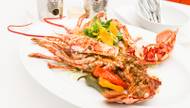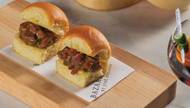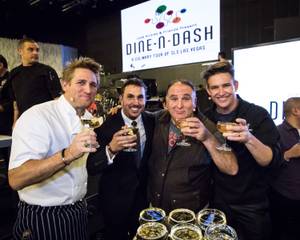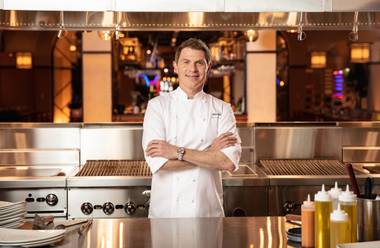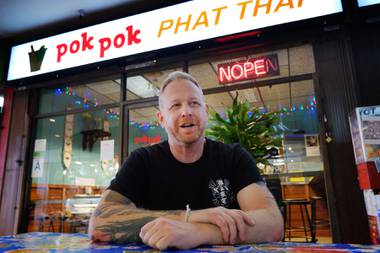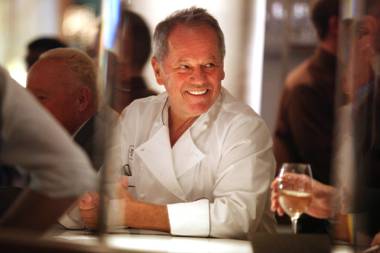There’s a certain energy inside Bazaar Meat, when the dinner rush gets going and smoke from the wood-burning ovens starts rising and servers start whacking massive chicharrones with silver mallets and bartenders start stirring foggy concoctions into fresh cocktails. As executive chef, David Thomas is at the center of that circus, running the kitchen inside José Andrés’ ambitious SLS “meat house,” where there are almost 100 dishes on the menu every night. Thomas says that menu’s a work in progress, the result of an ongoing quest for new purveyors to work with and new products to highlight. “The search never stops, and the evolution of the menu will be forever. It’s always moving forward.”
On not being a steakhouse: “We get lumped into the category just because we offer so much beef, but José really doesn’t want it to be called a steakhouse. It’s an experience surrounding all things carnivorous. Meat doesn’t have to fall into the beef and pork category.”
On building the menu: “When we went through the R&D process, we tasted almost 500 cuts of different meat and animals and parts of the animal to really hone in on what we felt would benefit the guest.”
On cows that pre-date Kobe: “One of our most popular ribeyes is called the Washugyu, and the farm it’s coming from is Lindsay Ranch in Oregon. The Washugyu cattle breed is one that actually pre-dates Kobe cattle in Japan. It was a working breed rather than a consumption breed, and they brought the breed to the U.S. and crossbred it with American Angus. [Lindsay Ranch] holds a lot of the same practices they do in Kobe in the Hyogo Prefecture. Between the diet and the environment, they’re doing very similar practices in how they treat the animals, and it shows in the final results.”
On how to cook luscious suckling pig: “We start the process very, very slow, where the skin side goes down first in the cazuela and we add a little bit of water to the bottom and salt. And it goes into a wood oven at about 300 to 350 degrees, and we close the door of the oven so there’s no flame; it’s just the smoke and the temperature. Our whole pigs are from 10 to 12 pounds. They take two and a half to four hours, and it’s a real slow and low process. It’s almost confiting or rendering and slowly cooking the meat. Then we take it out, we flip the pig back over so the skin side is up, we load the oven full of wood and we bring the temperature up to about 450 degrees with lots of flame. It’s the high heat and flame that then crisps the skin. The reason why it’s so good is really just the pigs themselves. We don’t do anything special. We use salt, water and fire. That’s it.

